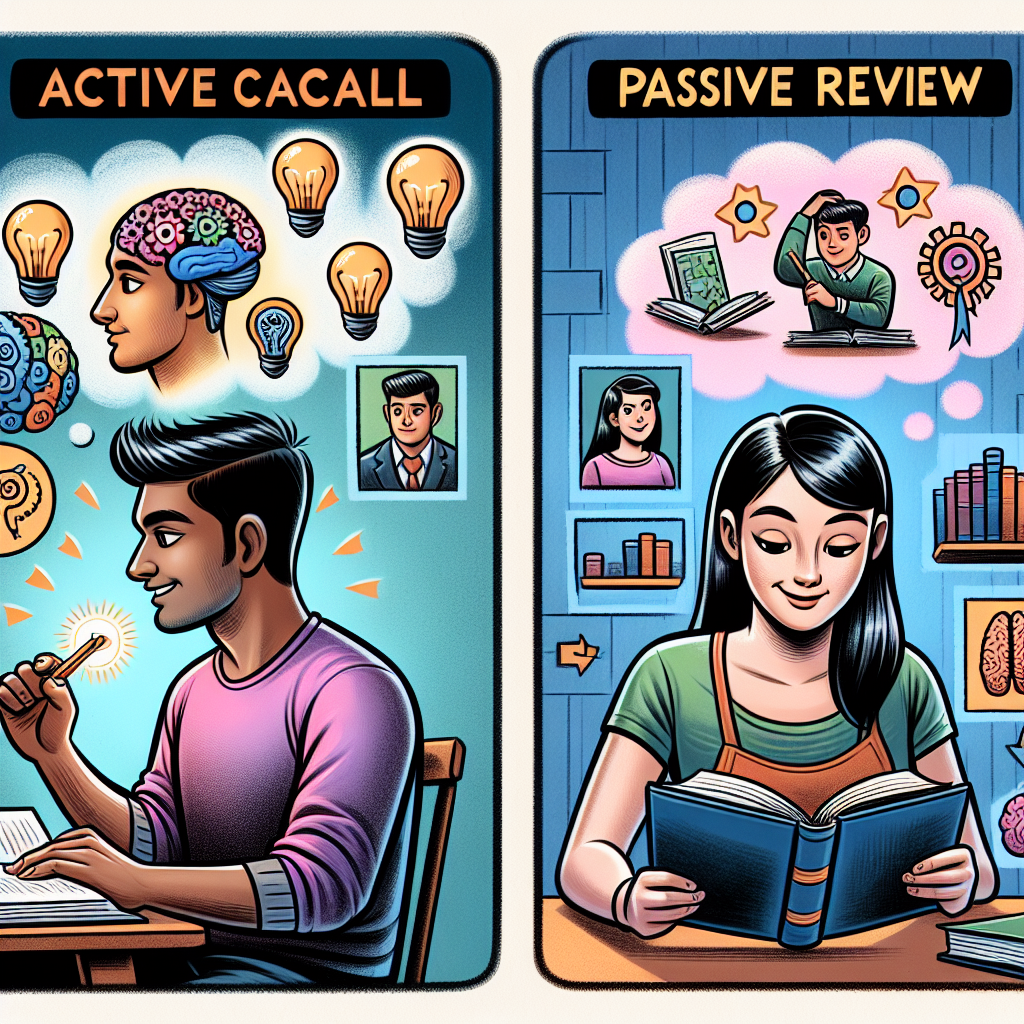Active Recall vs Passive Review Strategies: Which Learning Method Wins?
In the world of effective learning, active recall and passive review strategies stand as two contrasting approaches. Whether you are a student striving for academic excellence, a professional preparing for certification exams, or an autodidact committed to lifelong learning, understanding the differences between these methods is essential for optimal knowledge retention and academic performance. This comprehensive guide will explore the definitions, benefits, drawbacks, and practical applications of both active recall and passive review, helping you to unlock your full learning potential.
What is Active Recall?
Active recall is a cognitive science-backed learning technique that involves actively stimulating your memory during the learning process. Instead of passively reviewing materials, you test yourself on the information you need to remember, forcing your brain to retrieve and reconstruct knowledge. This process strengthens neural connections and enhances long-term memory retention.
- Definition: Actively trying to remember information without looking at the source material.
- Examples: Flashcards, self-quizzing, practice tests, closed-book recall, spaced repetition.
- Key Benefits: Improved retention, deeper understanding, and increased exam performance.
Understanding Passive Review Strategies
Passive review strategies involve exposing yourself to learning materials without actively engaging with them. This could mean rereading textbooks, watching lectures, highlighting notes, or listening to audio recordings. While these methods can introduce familiarity with the content, they often fail to create the strong memory traces necessary for long-term retention.
- Definition: Learning by reviewing material without forcing the brain to retrieve information.
- Examples: Rereading notes, highlighting, watching recorded classes, listening to podcasts.
- Key Drawbacks: Lower retention rates, illusion of competence, superficial understanding.
Comparing Active Recall and Passive Review Strategies
| Aspect | Active Recall | Passive Review |
|---|---|---|
| Engagement | High – requires active mental effort | Low – mainly exposure to content |
| Retention | Significantly improves long-term memory | Often leads to rapid forgetting |
| Efficiency | More effective in less time | Requires more time with less benefit |
| Examples | Flashcards, practice tests, self-quizzing | Rereading, highlighting, listening |
| Neuroscience Basis | Strengthens neural pathways through retrieval practice | Minimal impact on neural consolidation |
Why Does Active Recall Work?
According to cognitive psychology, retrieval practice forms the cornerstone of efficient learning. When you force your brain to recall information, you are not just assessing your memory — you are actively strengthening it. This process, known as the testing effect, has been shown in multiple studies to dramatically improve long-term retention. Conversely, passive learning creates a false sense of mastery, as recognizing information is much easier than recalling it from scratch.
How to Implement Active Recall in Your Study Routine
- Use Flashcards: Create digital or physical flashcards with questions on one side and answers on the other. Apps like Anki or Quizlet utilize spaced repetition algorithms to optimize review intervals.
- Practice Self-Testing: After studying a topic, close your materials and write down everything you remember. Check your recall against your notes and fill in gaps.
- Teach Someone Else: Explaining concepts aloud to a peer or even to yourself forces active engagement and reveals areas needing review.
- Use Practice Questions: Complete end-of-chapter questions or generate your own based on the material.
- Apply Spaced Repetition: Review information at increasing intervals to combat the forgetting curve and solidify knowledge.
Is There a Place for Passive Review?
While active recall trumps passive strategies for deep learning, passive review can still play a supportive role. For example, skimming material before a lecture can provide a helpful overview, and reviewing highlighted notes may refresh your memory before a test. However, passive review should not be your primary study method if your goal is long-term understanding and exam success.
Combining Active Recall and Passive Review for Optimal Results
The most effective learners combine both strategies. Begin with passive review to familiarize yourself with new material, then transition to active recall techniques to reinforce and test your understanding. This blended approach leverages the strengths of both methods, ensuring both breadth and depth in your learning.
Conclusion: Make Active Recall Your Learning Superpower
In the battle of active recall vs passive review strategies, active recall emerges as the superior method for robust learning, retention, and academic achievement. By consistently challenging your brain to retrieve information, you build stronger memory traces and set yourself up for long-term success. Remember, knowledge is not just about exposure — it is about engagement. Transform your study routine today by embracing the power of active recall.
